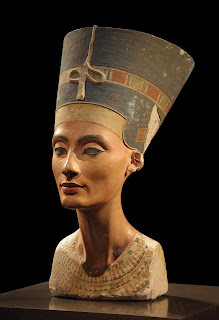Guys, I've done it. I've found the next big superstar. Taylor Swift, I'm warning you, prepared to be dethroned. Sorry to all the Justin Bieber fans out there, soon he's going to be old news. The only celebrity who will remain untouched is Beyonce because, well, she's Beyonce.
Ladies and gentlemen, I present to you.....
BOB BRIER.
Look at that pose! Tyra Banks better watch out, Bob Brier has perfected the art of the smize (smize: the art of smiling with your eyes). If you're still confused as to why I, and my whole family, am obsessed with Bob Brier, I understand. It took me a while to become a true convert, but by the end of this post I promise you will be part of the Bob Brier Fan Club (also known as the Brier Bunch).
My family has always enjoyed listening to The Great Courses lectures. The Great Courses are college-level audio programs going in-depth on all kinds of subjects. In my opinion, some of the best Great Courses series are on ancient Egyptian history. Guess who the professor is behind those ancient Egypt lectures? Thats right, you guessed it: Bob Brier.
My family owns two series by Bob Brier: 1) Great Pharaohs of Ancient Egypt and 2) History of Ancient Egypt. After finishing both of these series, which includes 36+ hours, I now feel like me and Bob are best friends. Let me explain why.
First of all, after 36 hours of listening to one man speak, you start to recognize certain speech patterns. My personal favorite: there are many recurring characters in Brier's lectures (including Pharaohs & Egyptian excavators) and Brier referring to these people as "my man [blank]." Bob Brier's favorite Pharaoh is Sneferu, and so Sneferu was constantly referenced as "my man Sneferu." Flinders Petrie is another favorite of Brier's; Petrie was an Egyptologist and I constantly hear him mentioned as "my man Flinders Petrie." I find this quality extremely amusing because Bob Brier knew neither Sneferu nor Petrie in person - he just learned about them, and then felt a camaraderie for these people who lived so long ago.
 |
Our man, Bob Brier
|
Also, Bob Brier has taught me a lot. I can't tell you what I ate for lunch today, but I can tell you the intricacies of how the Pharaoh Narmer united upper and lower Egypt. I can describe to you, in detail, the evolution of Egyptian burial techniques and how they all led up to the Great Pyramids. If you ever wondered who can teach you about hieroglyphs and Egyptian mythology, look no further.
While it's fun to compare Brier to celebrities (Kim Kardashian vs. Bob Brier: Who Will Win?), his real appeal goes much deeper. Brier brings history alive. Through him, I learned about the people in Ancient Egypt: what they feared, what they valued, and how their religion shaped their way of life. Over the course of Bob Brier's lectures, I learned that civilizations of Ancient Egypt might not have been so different from modern-day society.
That, my friends, is why Bob Brier will take the world by storm. He finds a way to unite people, even if they seemingly have nothing in common.
Finally, I think everyone's day could be brightened up by looking at these Bob Brier tweets. Follow him @AskBobBrier.
PS The Bob Brier Fan Club aka The Brier Bunch meets at the Cairo Museum on Thursdays. See you there!

























































